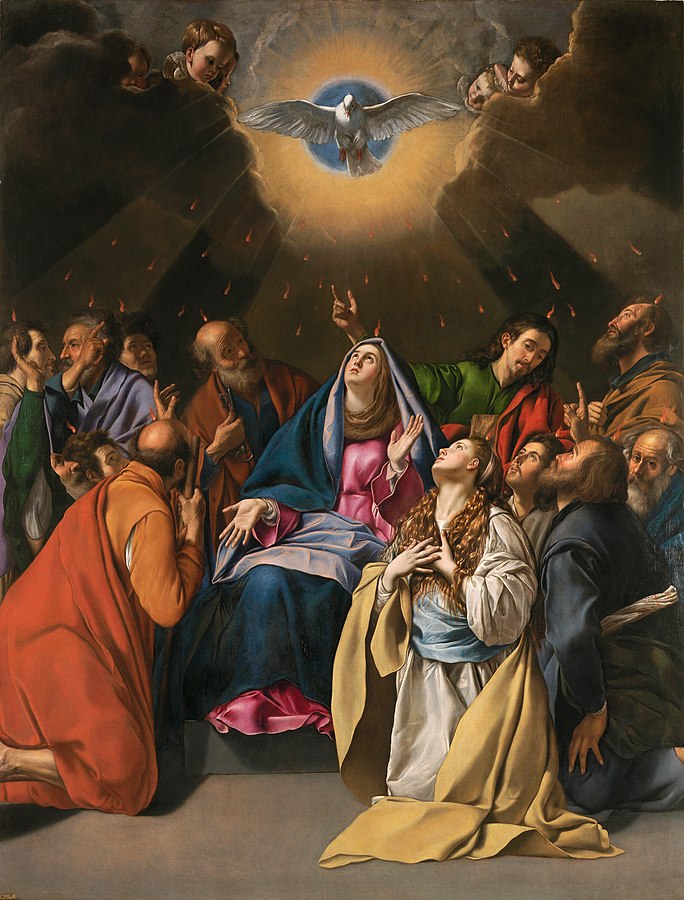This cantata, first performed on June 6th, 1729 for Pentecost Monday (“Whit Monday”), features a libretto by Picander. It elaborates on the opening words of the Gospel of the day, John 3:16-21, “For God so loved the world that he gave his one and only Son…”, for each movement of the libretto.
The piece opens with a grandiose “Sinfonia” which is a rework of the first movement of the Brandenburg Concerto No. 3, BWV 1048. To the original 3 violins, 3 violas and 3 cellos, Bach adds newly composed parts for 2 French horns, 2 oboes and 1 tenor oboe or “taille”. These additions thicken the texture considerably, giving the movement additional gravitas and a form more resembling of a concerto grosso, in which the original string parts become the concertino group against the full band.
The majestic opening Sinfonia makes this cantata a bit “top heavy”. It’s not clear why Bach didn’t write instead an opening chorus, for example. One theory is that, having recently taken the reins of the Leipzig Collegium Musicum, he had much more proficient instrumentalists at his disposal than choristers.
“Top heavy” doesn’t mean insubstantial, though. The libretto calls for 2 arias, one for alto and one for bass, separated by a tenor recitative. Bach writes an extensive alto aria, accompanied by the 2 oboes, on words that, as mentioned before, elaborate on the Gospel concept of God’s love of the world. A ternary rhythm and unhurried pace lend it a pastoral mood. The alto line opens with the same theme as the instruments, making the movement, from a formal perspective, a trio with basso continuo.
The tenor recitative is an “accompagnato”, i.e. accompanied, with an unusual lineup of 3 unison violins and 3 unison violas – clearly following the orchestration of the sinfonia. The text continues reflecting on the Gospel words, and a closing reference to the trembling of the “gates of Hell”.
The bass aria that follows, all violins and violas in unison conform the obbligato instrumental part. The vocal line imitates the opening of the strings’ part but just for four bars, then deviating. While the text mentions “grasping salvation” and the “kingdom of Heaven”, the instrumental part illustrates by constantly running upward scales and wide leaps, as if reaching.
The cantata closes with a chorale which is a bit longer than usual, maybe as an attempt to counterbalance the opening sinfonia. The strings and oboes double the voices, but the horns are not included. The text is by Martin Schalling from 1571. It’s the same chorale used by Bach in cantata 149 about a year before, and, notably, also the final number of the St. John Passion.
